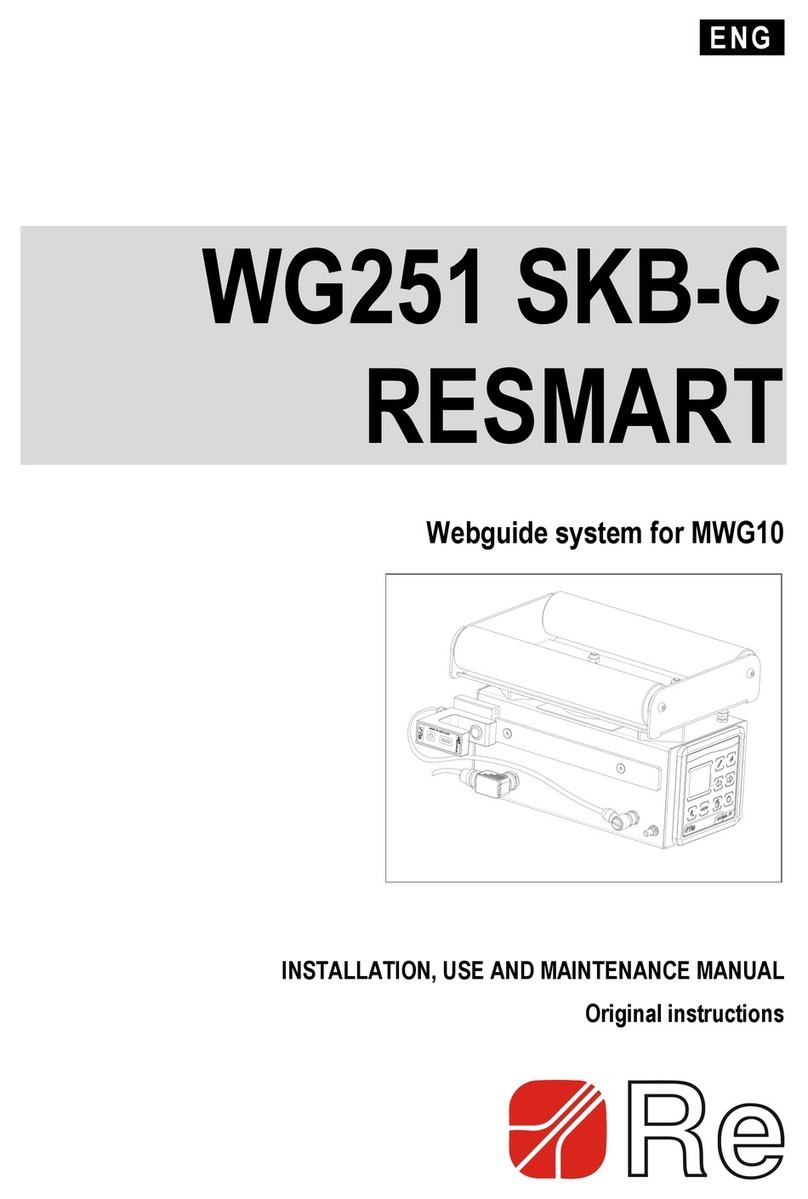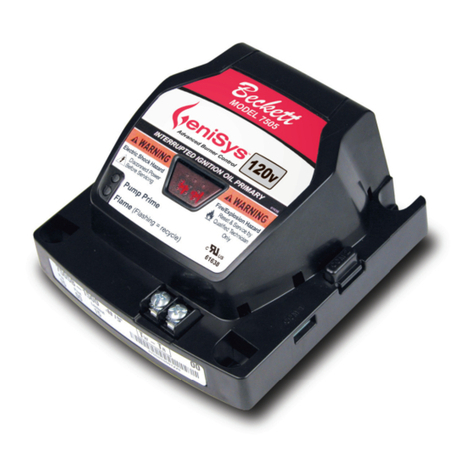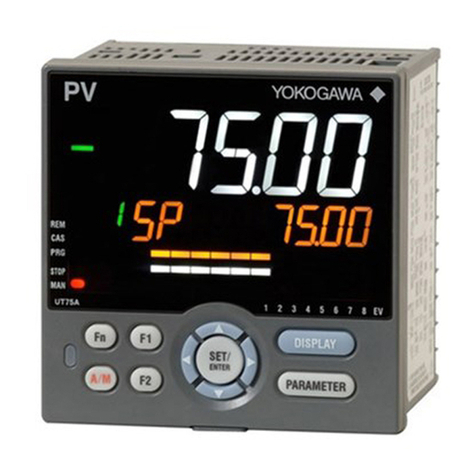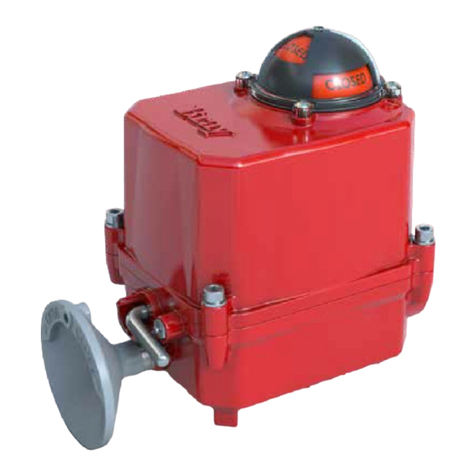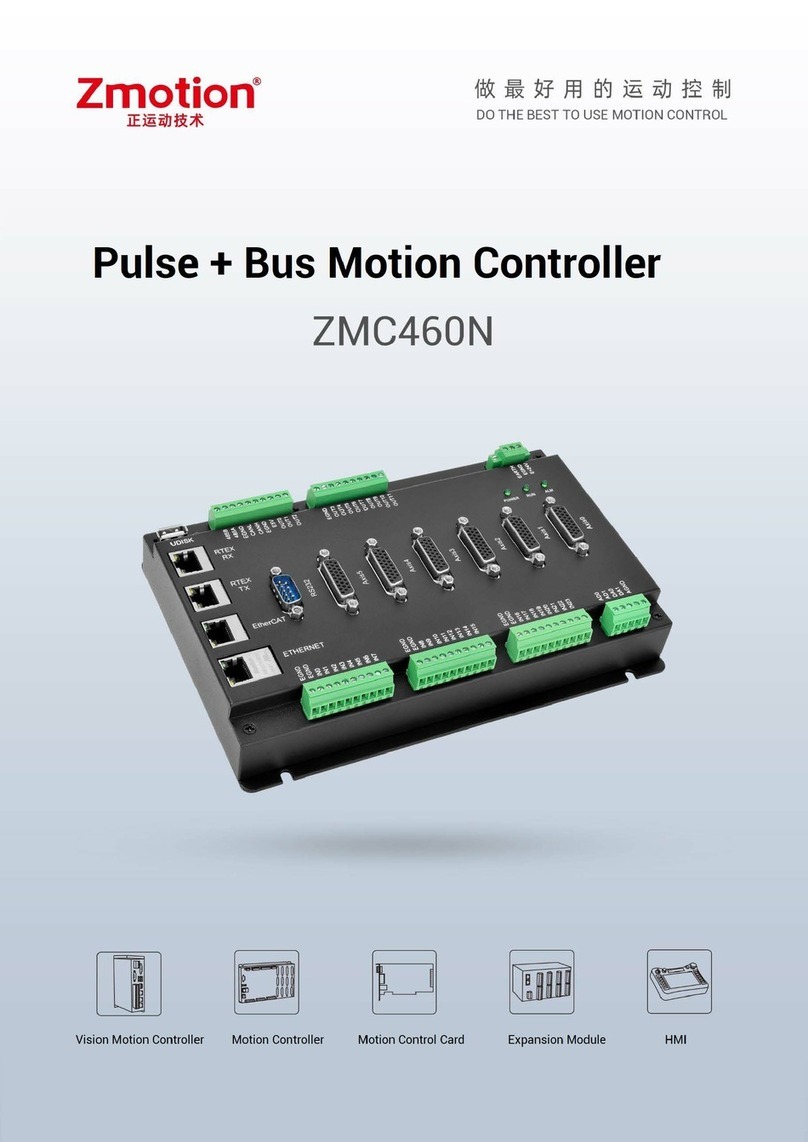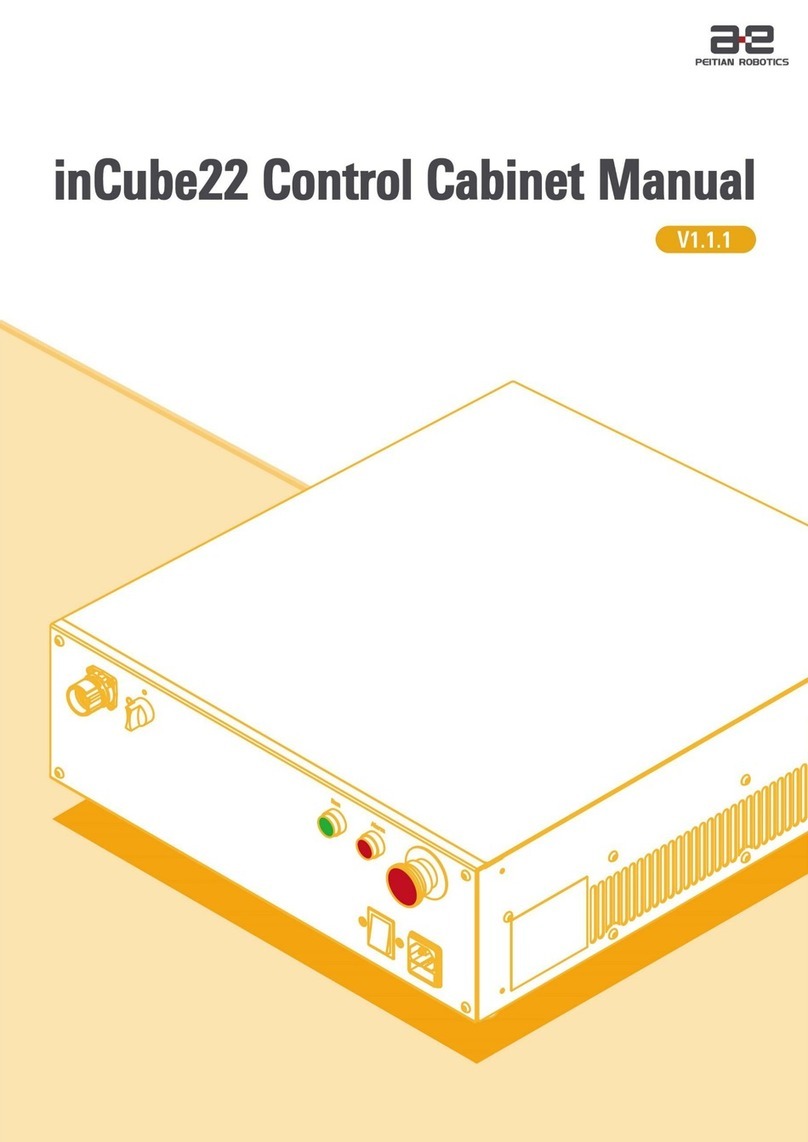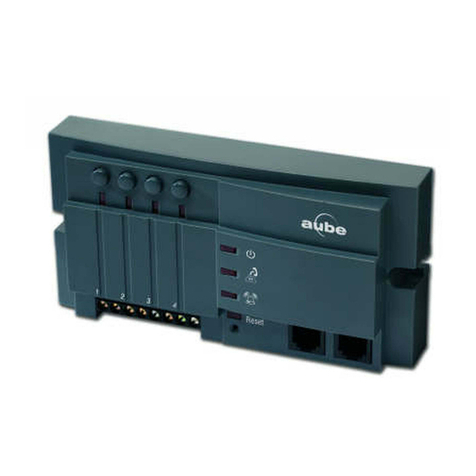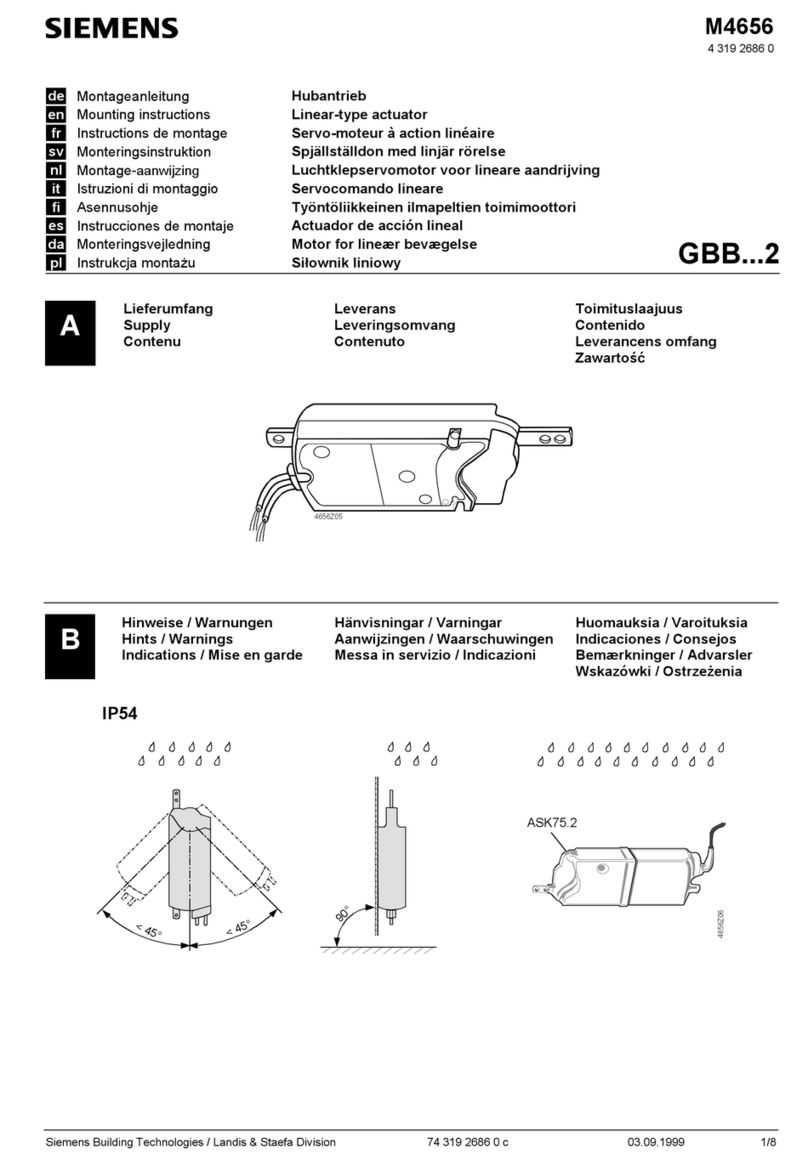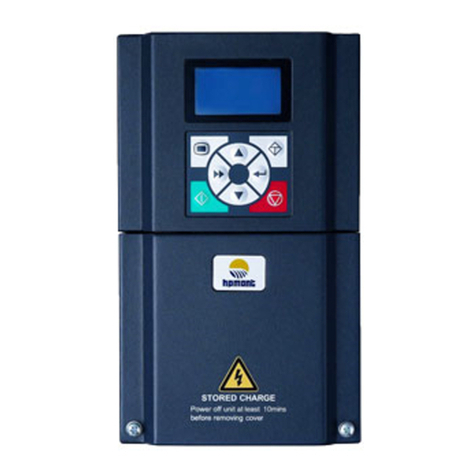Delco PG260G1 User manual

Starting System
90-864260200 AUGUST 2009 Page 4A-1
4
A
Electrical System
Section 4A - Starting System
Table of Contents
Precautions........................................................................4A-2
MerCruiser Color Wiring Diagrams....................................4A-4
Starter Identification...........................................................4A-2
Starter Specifications.........................................................4A-2
Torque Specifications........................................................4A-3
Lubricants, Sealants, and Adhesives.................................4A-3
Special Tools.....................................................................4A-3
Diagrams............................................................................4A-5
10‑pin Starting System Electrical Diagram.................4A-5
14‑pin Starting System Electrical Diagram.................4A-6
Positive Current Flow.........................................................4A-3
Battery Cable Size for MerCruiser Models.........................4A-6
Starter................................................................................4A-7
Starter Removal..........................................................4A-7
Inspection...................................................................4A-8
Starter Solenoid Removal...........................................4A-8
Installation...................................................................4A-8
Starting System Tests......................................................4A-10
Voltage Drop Test.....................................................4A-10
Low Voltage Test......................................................4A-10
Water and Corrosion Inspection...............................4A-10
Standard Starter Slave Solenoid......................................4A-11
Removal....................................................................4A-11
Testing......................................................................4A-11
Installation.................................................................4A-11

Starting System
Page 4A-2 90-864260200 AUGUST 2009
Precautions
! WARNING
Avoid fire or explosion hazard. Electrical, ignition, and fuel system components on Mercury Marine products comply with federal
and international standards to minimize risk of fire or explosion. Do not use replacement electrical or fuel system components
that do not comply with these standards. When servicing the electrical and fuel systems, properly install and tighten all
components.
! WARNING
Neglect or improper maintenance, repairs, or inspections of the power package can result in product damage or serious injury
or death. Perform all procedures as described in this manual. If you are not familiar with proper maintenance or service
procedures, consign the work to an authorized Mercury Marine dealer.
! WARNING
Performing service or maintenance without first disconnecting the battery can cause product damage, personal injury, or death
due to fire, explosion, electrical shock, or unexpected engine starting. Always disconnect the battery cables from the battery
before maintaining, servicing, installing, or removing engine or drive components.
NOTICE
Without sufficient cooling water, the engine, the water pump, and other components will overheat and suffer damage. Provide
a sufficient supply of water to the water inlets during operation.
IMPORTANT: Refer to the following precautions when working on or around the electrical harness, or when adding other electrical
accessories, to avoid damage to the electrical system.
• Do not tap accessories into the engine harness.
• Do not puncture wires for testing (probing).
• Do not reverse the battery leads.
• Do not splice wires into the harness.
• Do not attempt diagnostics without the proper, approved service tools.
Starter Identification
Delco starter identification
a - PG 260G1
b - PG 260L
Starter Specifications
The Permanent Magnet Gear Reduction starter motors features small permanent magnets mounted inside the field frame (NOTE:
The actual configuration of these magnets differs between the PG200, PG250 and PG260; the field frames with permanent
magnets are not interchangeable. Otherwise, the units are similar.) These magnets take the place of current‑carrying field coils
mounted on iron pole pieces. A 4:1 ratio Internal gear reduction results in armature speeds in the 7000 RPM range. The armature
and drive shaft are mounted on roller or ball bearings in the place of bushings. The solenoid switch, plunger, return spring, and
shift lever are permanently mounted in the drive housing.
29184
ab

Starting System
90-864260200 AUGUST 2009 Page 4A-3
Delco PG260G1 starter specifications
No load test
Delco ID
number
Engine
rotation Volts Minimum amp draw Maximum
amp draw Minimum RPM Maximum RPM
9000884 LH 12.0 35 85 2550 4150
Delco PG260L starter specifications
No load test
Delco ID
number
Engine
rotation Volts Minimum amp draw Maximum
amp draw Minimum RPM Maximum RPM
9000888 LH 12.0 35 85 2550 4150
Torque Specifications
PG260F1 and PG260L
Description Nm lb–in. lb–ft
Starter mounting bolts 40.5 – 30
Battery terminal nut 9 84 –
Switch terminal nut 2 20 –
Resistor terminal nut 2 20 –
Lubricants, Sealants, and Adhesives
Tube Ref No. Description Where Used Part No.
25 Liquid Neoprene Electrical terminals 92- 25711 3
Special Tools
DMT 2004 Digital Multimeter 91‑892647A01
Positive Current Flow
NOTE: Ensure that all connections are tight and have the required resistance.
Positive current flow following ignition switch activation includes:
• Battery to the starter mounted solenoid switch (RED battery cable).
• Solenoid switch to the circuit breaker (RED).
• Circuit breaker to the wire junction (RED/PUR).
• Wire junction to the wiring harness plug (RED/PUR) terminal 6.
• Wiring harness plug to the 20 amp fuse (RED/PUR).
• 20 amp fuse to the ignition switch terminal I (RED/PUR); ignition switch is in the "START" position.
• Ignition switch terminal I to terminal C.
• Ignition switch terminal C to the neutral start switch (YEL/RED); the neutral start switch much be in the neutral position.
• Neutral start switch to the wiring harness plug terminal 7 (YEL/RED).
• Wiring harness plug to the starter solenoid (small terminal) (YEL/RED). The black (small terminal) wire is ground.
• Starter solenoid is now closed, completing the circuit between the large terminal (RED/PUR) and the other large terminal
(YEL/RED), causing the starter motor to crank.
Lubricants, Sealants, Adhesives
Tube Ref No. Description Where Used Part No.
25 Liquid Neoprene Electrical terminals
Electrical connections 92- 25711 3

Starting System
Page 4A-4 90-864260200 AUGUST 2009
Special Tools
DMT 2004 Digital Multimeter 91‑892647A01
A C O
M
m
A V H z
mV
V
H z TEMP
m A
A
IG
IP
OFF
H z
TEMP
4516
Measures RPM on spark ignition (SI) engines, ohms, amperes, AC and DC
voltages; records maximums and minimums simultaneously, and accurately reads
in high RFI environments.
MerCruiser Color Wiring Diagrams
Large scale, oversized color wiring diagrams are available in the MerCruiser Diagram Binder. The initial distribution of the
MerCruiser Diagram Binder was delivered to MerCruiser authorized repair facilities in June and July of 2007. As new diagrams
are developed they will be distributed along with a revised, comprehensive index for addition to an existing binder.
The MerCruiser Diagram Binder features:
• An index that identifies the diagrams by harness number, by engine group and drive, and by engine size and type
• The diagrams are printed on an extremely durable, coated synthetic paper and can be wiped clean of grease and oil after
use.
• The larger diagrams are easier to read. The diagrams will come in two sizes, depending on the complexity of the related
harness.
• Removable pages are easier to reference and allow the technician to take only the required diagram to a repair site instead
of a complete service manual.
• Dry erase markers can be used directly on the diagrams for tracing circuits or for training. They wipe clean after use.
• Harness number headings make the drawings easy to find. The accompanying MerCruiser Diagram Binder Index speeds
lookup when the harness number is not known.
For information about ordering additional copies of the MerCruiser Diagram Binder or binder updates contact:
• MerCruiser Authorized Dealers, Repair Centers, or OEMs can order service literature on MercNET.
• Consumers can order service literature through the Mercury Dock Store (www.mercurydockstore.com), contacting Mercury
MerCruiser publications at 920‑929‑5110 or by contacting their local MerCruiser Authorized Dealer or Repair Center.

Starting System
90-864260200 AUGUST 2009 Page 4A-5
Diagrams
10‑pin Starting System Electrical Diagram
Starting system electrical
diagram
a - Ignition switch
b - 20 amp fuse
c - Slave solenoid
d - Circuit breaker
e - Neutral safety switch
f - To the alternator
g - Starter motor
h - 90 amp fuse
i - Engine ground
29187
a
b
c
d
e
f
g
h
i

Starting System
Page 4A-6 90-864260200 AUGUST 2009
14‑pin Starting System Electrical Diagram
a - Ignition switch
b - Harness plug
c - Starter solenoid
d - Circuit breaker
e - Starter motor
f - Wire junction
g - Neutral safety switch
h - 90‑amp fuse
i - Engine ground (–)
This is a general description of the positive current flow from the battery through the starting system until the starter motor cranks.
NOTE: Ensure that all connections are tight and have the required resistance.
• Battery to the solenoid switch on the starter (RED battery cable).
• Solenoid switch to the circuit breaker (RED).
• Circuit breaker to the wire junction (RED/PPL).
• Wire junction to the wiring harness plug terminal 6 (RED/PPL).
• Ignition switch terminal "C" to the neutral start switch (YEL/RED). Neutral start switch must be at neutral position.
Battery Cable Size for MerCruiser Models
IMPORTANT: Only use copper battery cables. Do not use aluminum cables for any marine installations.
B
SI
25316
PNK/PUR
YEL/RED YEL/RED
YEL/RED
YEL/RED
YEL/RED
RED/PUR
YEL/BLK
RED
RED/PUR
RED
BLK
BLK
b
d
e
f
g
h
i
a
c

Starting System
90-864260200 AUGUST 2009 Page 4A-7
If longer battery cables are required, the cable gauge size must increase. See chart following for correct wire size.
a - Wire size by cross‑sectional
area (gauge)
b - Battery cable length
NOTE: Engine starting batteries should be located as close to engine as possible.
To select proper size positive (+) and negative (–) battery cables using the following procedure and chart:
1. Add the positive and negative cable lengths together.
2. Divide by 2 to obtain the average cable length.
IMPORTANT: Terminals must be soldered to cable ends to ensure good electrical contact. Use electrical grade (rosin flux) solder
only. Do not use acid flux solder, as it may cause corrosion and a subsequent failure.
Average Cable Length Cable Size (Gauge)
Up to 1.1 m (3.5 ft.) 25 mm² (4)
1.1 ‑ 1.8 m (3.5 ‑ 6 ft.) 35 mm² (2)
1.8 ‑ 2.3 m (6 ‑ 7.5 ft.) 50 mm² (1)
2.3 ‑ 2.9 m (7.5 ‑ 9.5 ft.) 50 mm² (0)
2.9 ‑ 3.7 m (9.5 ‑ 12 ft.) 70 mm² (00)
3.7 ‑ 4.6 m (12 ‑ 15 ft.) 95 mm² (000)
4.6 ‑ 5.8 m (15 ‑ 19 ft.) 120 mm² (0000)
Starter
Starter Removal
! WARNING
Performing service or maintenance without first disconnecting the battery can cause product damage, personal injury, or death
due to fire, explosion, electrical shock, or unexpected engine starting. Always disconnect the battery cables from the battery
before maintaining, servicing, installing, or removing engine or drive components.
1. Disconnect the battery cables from the battery.
2. Disconnect the wires from the solenoid terminals.
3. Remove the starter mounting bolts.
4. Pull the starter assembly away from the flywheel and remove from the engine.
a - PG260G1
b - PG260L
2758
a
b
29188
ab

Starting System
Page 4A-8 90-864260200 AUGUST 2009
Inspection
The starter motor and the solenoid are completely enclosed in the drive housing to prevent contamination by moisture and dirt.
Perform any required periodic inspection as follows:
1. Inspect the terminals for corrosion and loose connections. Reseal any exposed electrical connections.
Starter electrical connections
a - Starter solenoid
b - Positive (RED) cable
c - 90 amp fuse (not serviceable)
d - Negative (BLK) cable
e - Rubber boot
Tube Ref No. Description Where Used Part No.
25 Liquid Neoprene Electrical connections 92- 25711 3
2. Inspect the wiring for frayed or worn insulation.
3. Ensure that the starter mounting bolts are tight.
Starter Solenoid Removal
1. Remove the screws retaining the solenoid to the starter
a - Starter solenoid
b - Starter motor
c - Screws (3)
.
2. Remove the solenoid from the drive housing.
Installation
IMPORTANT: The special mounting shim (if equipped) installed between the starter motor and the engine block must be reused.
1. Place the starter motor into position and install the mounting bolts. Torque the bolts.
Description Nm lb‑in. lb‑ft
Starter mounting bolts 40.5 – 30
29190
aa
b
c
d
e
29189
a
b
cc

Starting System
90-864260200 AUGUST 2009 Page 4A-9
2. Connect the YELLOW/RED wire to the switch "S" terminal. Tighten the terminal nut to specification.
Starter electrical connections
a - Switch terminal, (S)
b - Positive battery terminal (+)
c - Resistor terminal (R)
Description Nm lb‑in. lb‑ft
Switch terminal (S) nut 2 18 –
3. Connect the positive (+) battery cable and the 90 amp fuse to the battery terminal. Tighten the terminal nuts to specification.
Description Nm lb‑in. lb‑ft
Battery terminal nut 9.5 84 –
4. Connect the ORANGE wire and the RED wire to the post on the 90 amp fuse that is installed to the starter positive (+) battery
terminal. Tighten terminal nut securely.
a - Starter terminal
b - Insulator
c - Positive (+) battery connection
NOTE: The back of the fuse is an insulator.
NOTE: The PURPLE/YELLOW wire is the 12 volt battery positive (+) to the electronic fuel pump while the engine is in starting
mode.
5. Carbureted Models: Connect the PURPLE/YELLOW wire to the resistor "R" terminal. Tighten the terminal nut to specification.
Description Nm lb‑in. lb‑ft
Resistor (R) terminal nut 2 18 –
6. Coat all terminal with sealant.
Tube Ref No. Description Where Used Part No.
25 Liquid Neoprene Electrical connections 92- 25711 3
7. Install the battery cable boot, if equipped.
8. Connect the positive (+) battery cable to the positive (+) battery terminal and tighten the cable clamp.
9. Connect the negative (‑) battery cable to the negative (‑) battery terminal and tighten the clamp.
29217
a
b
c
29218
a
b
c

Starting System
Page 4A-10 90-864260200 AUGUST 2009
Starting System Tests
Voltage Drop Test
Low power supply voltage and water contamination are the primary causes of most starter motor failures. Low power supply
voltage causes excessive heat to build up in the starter motor. It can also cause starter motor solenoid contact problems.
IMPORTANT: Perform these tests with a digital voltmeter before removing the starter from the engine.
1. Set the digital voltmeter to 0 before testing.
2. Ensure that the battery is fully charged.
3. Remove the coil wire from the distributor cap and ground it to prevent the engine from starting.
4. Connect the voltmeter positive (+) lead directly to the large, threaded terminal.
5. Connect the voltmeter negative (‑) lead directly to an unpainted metal surface on the starter housing.
6. Crank the engine over with the key switch for 10‑15 seconds while observing the voltmeter.
• A voltmeter reading of 9.5 volts or more indicates that the battery is supplying sufficient voltage to the starter to operate
properly. If the starter does not function properly, the starter or the engine are malfunctioning. Remove the spark plugs
and try turning the engine over by hand to rule out an engine problem.
• A voltmeter reading below 9.5 volts indicates a voltage loss between the starter motor and the battery. Check all
components between the starter motor and the battery for damage, wear, and proper application.
Low Voltage Test
1. Test the battery positive (+) cable first. Connect the voltmeter positive (+) lead directly to the positive (+) post of the battery.
Do not use the battery cable terminal. Connect the voltmeter negative (‑) lead directly to the large, threaded starter motor
positive (+) terminal to which the battery positive (+) cable is connected.
NOTE: Remove one voltmeter lead before starter motor is turned off or voltmeter damage may occur. The starter may produce
a voltage spike that can damage a voltmeter.
2. Crank the engine over while observing the voltmeter. The maximum allowed drop is 0.25 volts.
3. To find the point where the resistance is highest, leave the voltmeter positive (+) lead on the battery post and move the
voltmeter negative (‑) lead to the battery positive (+) cable ring terminal, which is on the threaded starter terminal.
4. Move voltmeter negative (‑) lead to the battery cable itself, which is inside the crimped battery cable ring terminal.
5. Continue to test each battery cable connection back to the battery positive (+) post. If a battery switch is used, check between
the battery cable ring terminal and the switch's terminal.
6. Check for voltage drop on the battery negative (‑) cable. Connect voltmeter negative (‑) lead directly to the battery negative
(‑) post, not the battery cable ring terminal. Connect voltmeter positive (+) lead to an unpainted surface of the starter housing.
NOTE: Remove one voltmeter lead before starter motor is turned off or voltmeter damage may occur. The starter may produce
a voltage spike that can damage a voltmeter.
7. Crank the engine over while observing the voltmeter.
IMPORTANT: The maximum allowed drop is 0.25 volts.
8. To find the point where the resistance is highest, leave voltmeter negative (‑) lead on battery negative (‑) post and move
voltmeter positive (+) lead to the ground stud where the battery negative (‑) cable is connected.
9. Move the voltmeter negative (‑) lead to the battery negative (‑) cable ring terminal that is on the ground stud.
10. Move the voltmeter positive (+) lead to the battery cable itself, which is inside the crimped battery cable ring terminal.
11. Test each battery cable connection in this manner back to the battery post.
12. After testing to ensure that the starter motor is getting at least 9.5 volts, test the starter motor solenoid for at least 9.5 volts
from the slave solenoid during cranking. Low voltage at the starter solenoid can cause intermittent operation of the solenoid
contacts and shorten the life of the solenoid.
13. Connect the voltmeter positive (+) lead to the terminal on the starter solenoid with the YEL/RED wire from the slave solenoid
connected to it.
14. Connect the voltmeter negative (‑) lead to unpainted surface of the starter housing.
15. Crank the engine over and observe the voltmeter. If the starter solenoid is not getting 9.5 volts, the YEL/RED wire or the slave
solenoid could be the cause of the low voltage.
Water and Corrosion Inspection
1. Remove the 2 short screws from the starter motor end cap and inspect the threads.
2. If they are clean and gold in color, the starter motor has not had water inside of it.
3. If they are dirty and discolored the starter motor may have water contamination and should be replaced.
IMPORTANT: Starter damage caused by water contamination is not covered by the Mercury MerCruiser warranty.

Starting System
90-864260200 AUGUST 2009 Page 4A-11
Standard Starter Slave Solenoid
Removal
1. Remove and retain the starter solenoid insulator.
2. Remove and retain the starter solenoid top terminal nuts and lockwashers.
3. Mark the position of the engine harness wires on the starter solenoid top terminals, and remove the wires from the starter
solenoid.
4. Mark the position of the engine harness boot connectors on the starter solenoid side terminals. Remove the connectors from
the starter solenoid.
5. Remove and retain the solenoid retaining screws.
6. Remove the starter solenoid.
a - Insulator
b - Nut (2)
c - Lockwasher (2)
d - Battery terminals
e - Side terminals
Testing
1. Connect continuity meter test leads of to each of the two solenoid battery terminals.
2. Connect positive (+) 12 volt battery power with jumper leads to one of the solenoid side terminals.
3. Actuate the solenoid by supplying negative (‑) 12 volt battery power to the other solenoid side terminal.
4. If no meter movement occurs, replace the solenoid.
Installation
1. Place the starter solenoid on the mounting bracket and secure with the starter solenoid retaining screws.
2. Connect the engine harness boot connectors to the starter solenoid side terminals.
3. Connect the engine harness wires to the starter solenoid top terminals, with the lockwashers and nuts. Tighten securely.
4. Install the starter solenoid insulator onto the starter solenoid top terminals.
29219
a
b
c
d
e

Starting System
Notes:
Page 4A-12 90-864260200 AUGUST 2009
Table of contents
Popular Controllers manuals by other brands

Converteam
Converteam GEMTEQ I/O GEM80 Technical manual
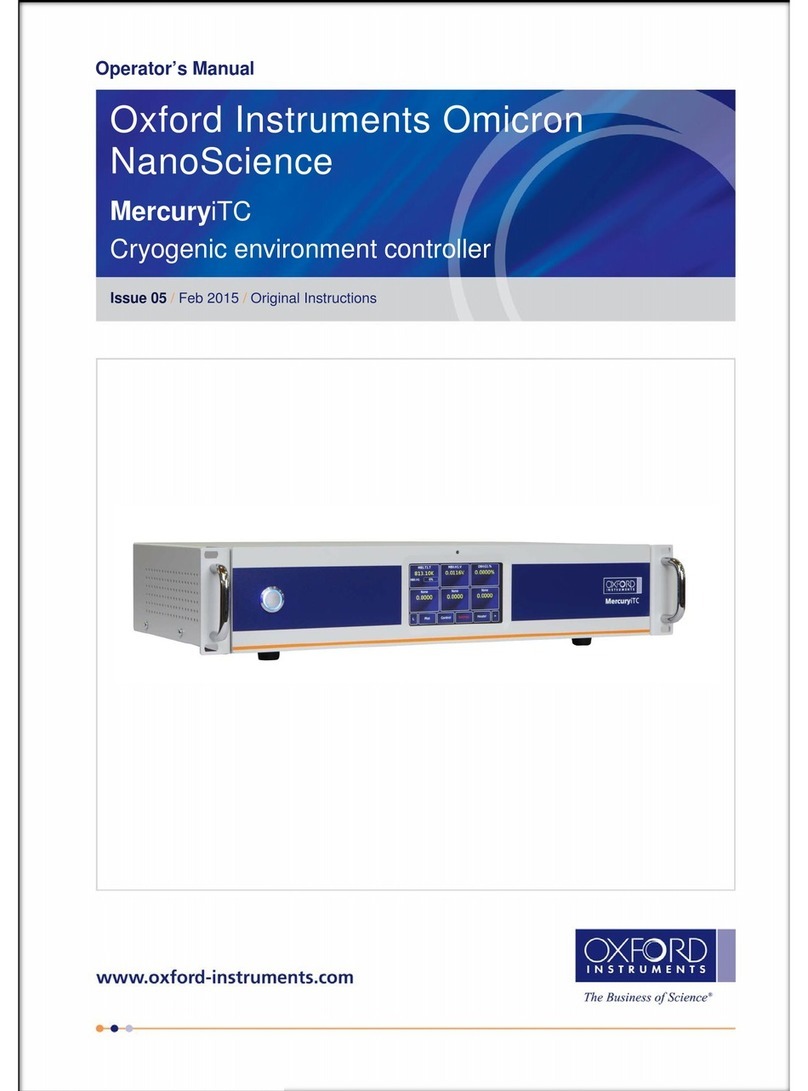
Oxford Instruments Omicron NanoScience
Oxford Instruments Omicron NanoScience MercuryiTC Original instructions
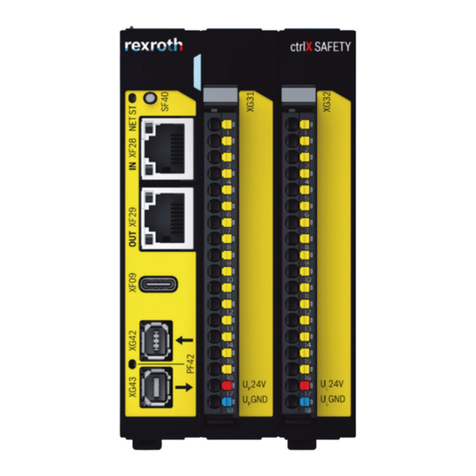
Bosch
Bosch Rexroth ctrlX SAFETY SAFEX-C.12 operating instructions
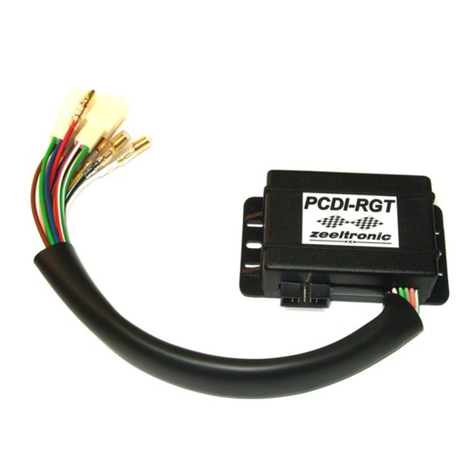
zeeltronic
zeeltronic PCDI-RGT user manual
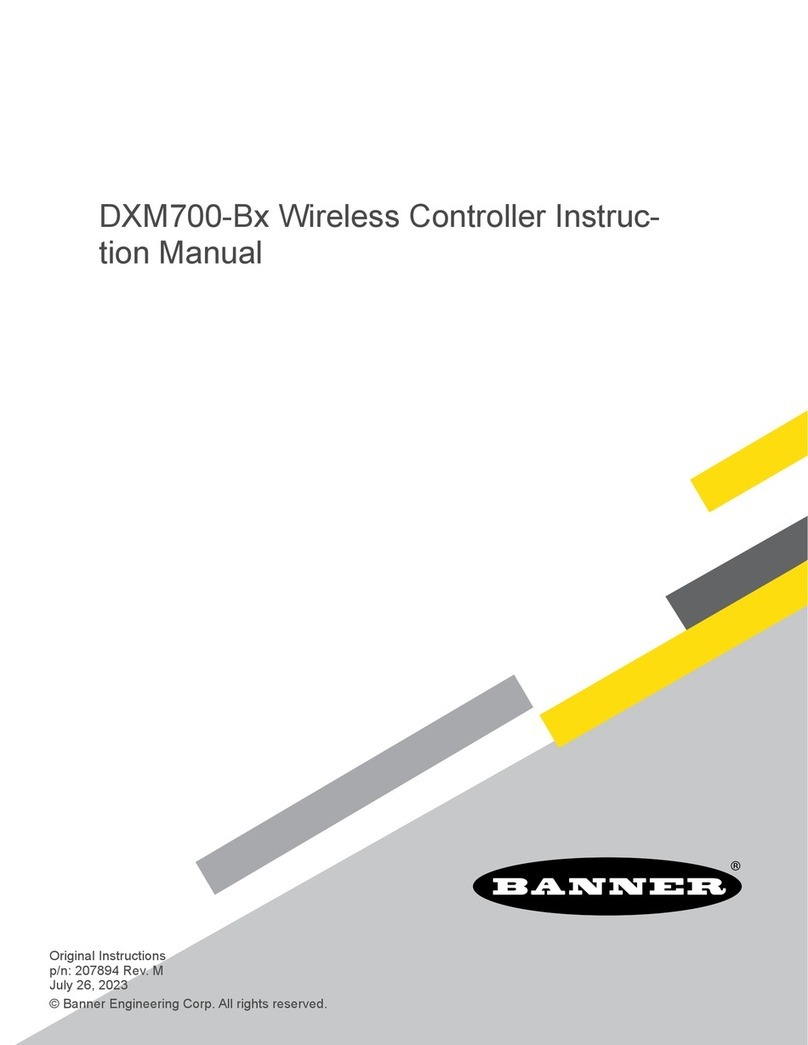
Banner
Banner Sure Cross DXM700-Bx instruction manual

Hacker
Hacker HST-120 operating manual
